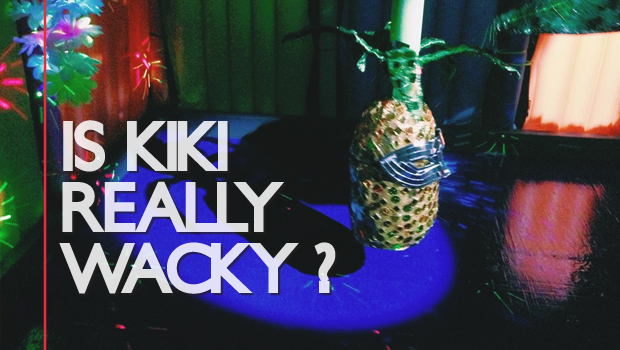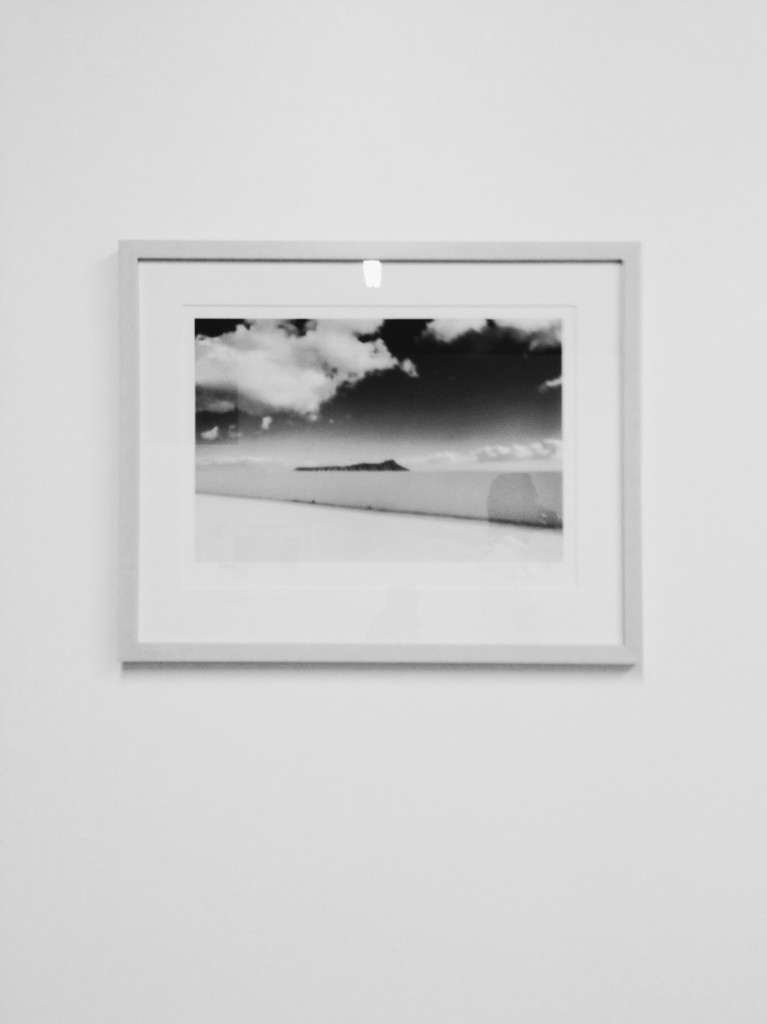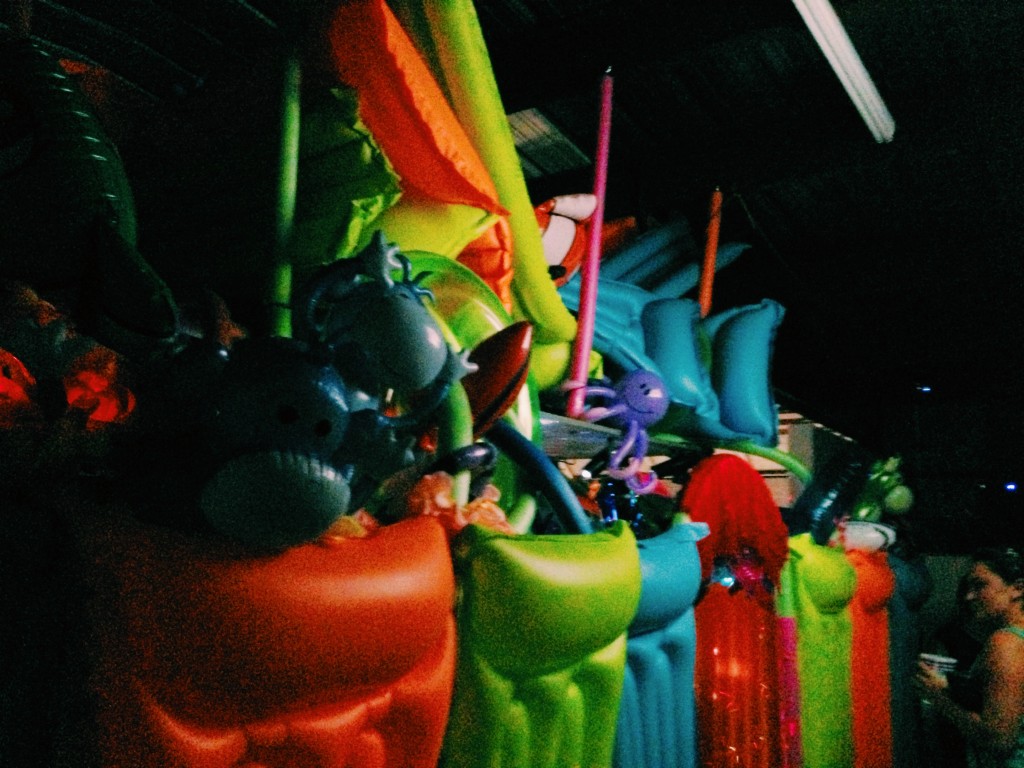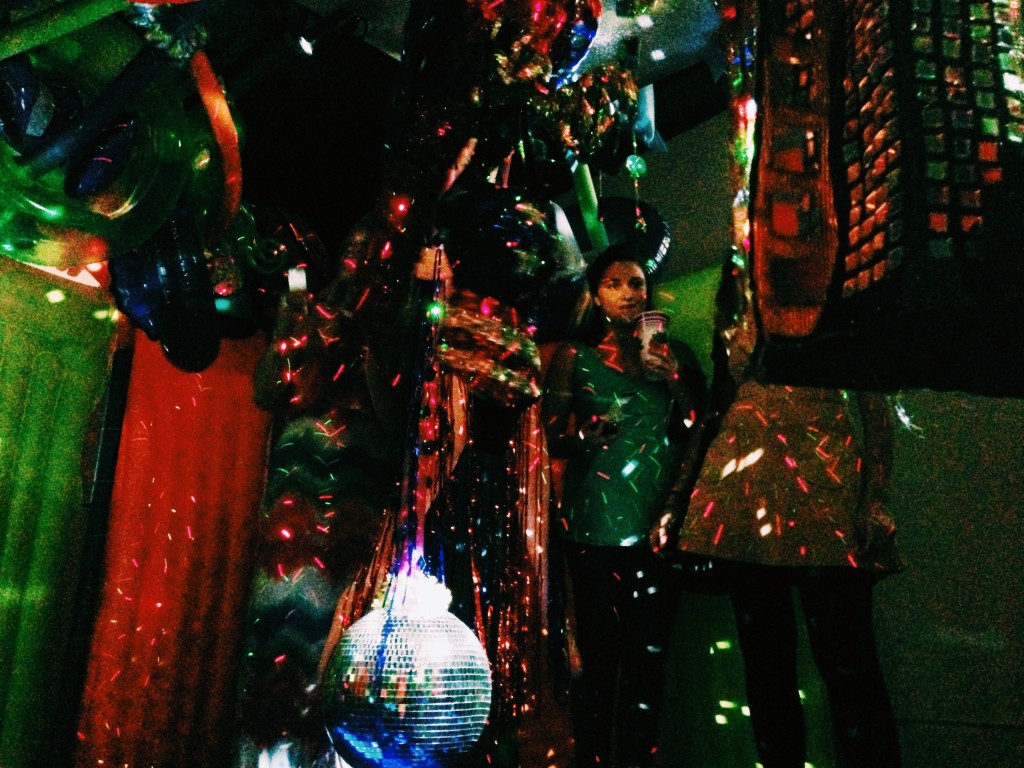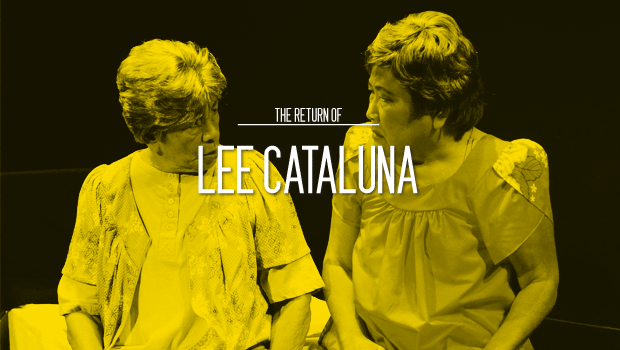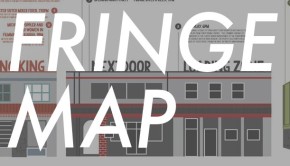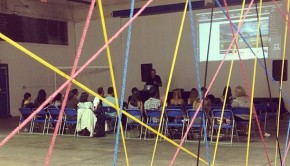A Bittersweet Deconstruction of Globalized Paradise
Two contrasting views of Waikiki are currently on display at SPF Projects in Kakaako—Abstractions, Waikiki ’73 by E.Y. Yanagi and Wacky-kiki: The Queen of America! by Robert Reed. Curator Drew Broderick calculatedly juxtaposes the graceful simplicity of Yanagi’s black and white photographs against the sensory overload of Reed’s installation. Visitors to SPF Projects first see Waikiki 73, then experience Wacki-kiki: Queen of America! in the upstairs gallery. Although the two artists’ bodies of work are curated as one show and compliment each other, they read as two separate exhibitions.
In his 1973 images, Honolulu photographer Yanagi captures an eerie sense of desolation in the throng of the Waikiki landscape. The pictures reveal a dual sense of detachment and decay, yet the visually calm work feels almost meditative. Viewing them offers a glimpse into another time, as if from an alternative reality and suggesting a Waikiki devoid of human presence. It’s serene and contemplative.
Upstairs is another story: In stark contrast to Waikiki 73, Honolulu artist Robert Reed transforms SPF’s intimate loft space into a microcosm of excess. A structure composed of tomorrow’s landfill—walls of inflatable acidic beach toys and rafts—fills the floor space creating an absurdist adult funhouse. Blinking multi-colored LED lights and synthetic lei accent the construction’s architecture; the Disneyfied shelter reads like an adorned homeless dwelling.
Inside is a labyrinth of decadence and absurdity. Disco balls spin alongside inflatable sex dolls; a sequined pineapple wearing a masquerade mask dangles alongside a glittering Waikiki high-rise. Reed creates a carnival atmosphere that concurrently seduces and repulses, a sparkling exterior that fails to conceal a sordid core.
Wacky-kiki’s confrontational environment incorporates multifarious elements: lights, sound, bright colors, and lots of plastic. Formally, the intricacy and clutter of the work recall the 2006 installation, Black Pussy Soirée Cabaret Macramé, by the late internationally acclaimed sculptor Jason Rhoades, who rebuked established formal values in art by overwhelming the viewer with overlapping images and objects. Yet, unlike the intentionally disorienting and nauseating disarray of Rhoades’s work, there is order in Reed’s chaos. Despite its bold complexity, Wacky-kiki retains a formal consideration that renders the piece both palatable and lucid.
Still, the superficiality of the scene remains decadently kitsch. Conceptually, Reed’s indulgent celebration of banal mass culture echoes the iconic works of Jeff Koons. But, while in opposition to Koons’s proclaimed reverence of the mundane, Reed critiques consumer culture through his presentation of how Corporate America sells Hawaii as paradise. Wacky-kiki contextualizes the effects of globalization in Waikiki: rampant gentrification, the rise of franchising, and escalating homelessness.
Above it all, video documentation of a performance by Reed is projected onto the wall; it is footage of Reed costumed as an anonymous amalgamation of Muppet, alien, and drag queen as he parades around the streets Waikiki and interacts with the public. Of course, the situationist performance takes place on the Fourth of July; Reed appropriately accessorizes his attire with an American flag. Perhaps it’s not surprising that Reed cites the late Australian performance artist and designer Leigh Bowery as an inspiration for his work.
Reed’s character in the Waikiki performance reflects the surreal fusion of cabaret, cartoon, and bondage elements visible in Bowery’s costuming. As further evidence of the event, his performance ensemble is draped alongside Old Glory on the gallery wall. The installation’s audio further contributes to the contrivances of Wacky-kiki’s ambience: Madonna’s haunting anthem, “American Life”, leads an abrasive loop of formulaic pop music piped through hidden speakers on the ceiling.
Reed’s video documents his drag persona taunting globalized corporate sovereignty by enthusiastically interacting with the public. Tropes of transvestism and stereotypes of homosexuality pervade the work, yet Reed does not overtly attempt to engage the viewer in sexual politics. He employs the farcical theatrics of drag as a metaphor for the façade of patriotism that feebly camouflages the superficial trappings of the cult of commodity. Emblems of gay culture convey a point of reference for Wacky-kiki, but the dialogue engendered by the packaged aesthetics of consumerism dominates the work.
Unlike the majority of contemporary art on Oahu (and especially on the buildings surrounding it in Kakaako), Reed’s installation does not qualify as “Urban Art,” nor does it employ didacticism to educate the audience on the devastating effects of colonialism upon the land and culture of Hawaii. In defying those conventions, Wacky-kiki: Queen of America! feels like a breath of fresh air. The accessible work is visually engaging and composed of familiar elements. Although the work is neither alienating nor pretentious, its amalgamation of pop symbolism deciphers complex contemporary cultural codes. Wacky-kiki conveys a frank perspective on “paradise” and its place in the circus of global media culture. It speaks about issues that affect everyone.

